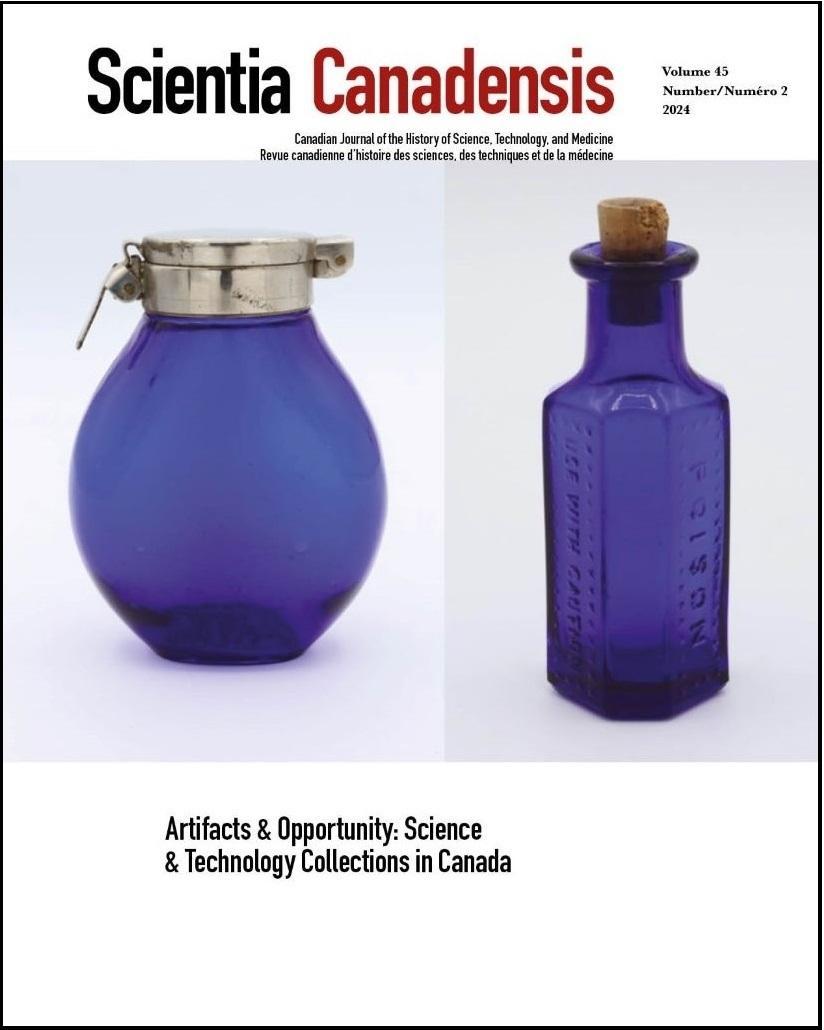Abstracts
Abstract
How can we explore object biographies when a collection has relied heavily on the donor’s narrative? This article uses three artifacts to explore the history of Ingenium’s Oblate Collection, a group of 282 medical artifacts used at L’Hôpital de L’Assomption in Grand Falls, New Brunswick, on the land of the Wolastoqiyik people. The hospital was opened in 1952 by the newly founded Secular Institute, a branch of the Oblate Missionaries of Mary Immaculate who ran 48 residential schools across Canada. Ingenium’s catalogue information relies largely on the narrative from the donors themselves, primarily two documents written by Oblate nurse Fabienne Rinfret, who describes life working in the hospital and how the artifacts were used by the staff. Our files lack stories of patient experiences or a fuller, more inclusive sense of their local context including connections to Indigenous people and land. To tell a fuller story of this collection, and f ill out missing historical dimensions, we can look to the artifacts themselves, and through a material-culture lens, discover new ways of knowing these objects.
Keywords:
- Oblates,
- Medical collection,
- Artifact records,
- Object biographies,
- Ingenium,
- New Brunswick
Résumé
Comment pouvons-nous explorer les biographies des objets lorsqu’une collection s’appuie fortement sur le récit du donateur ? Cet article utilise trois artefacts pour explorer l’histoire de la collection Oblate d’Ingenium, un groupe de 282 artefacts médicaux utilisés à l’Hôpital de L’Assomption à Grand-Sault, au Nouveau-Brunswick, sur le territoire du peuple Wolastoqiyik. L’hôpital a été ouvert en 1952 par l’Institut séculier nouvellement fondé, une branche des Missionnaires Oblats de Marie Immaculée qui dirigeaient 48 pensionnats à travers le Canada. Les informations contenues dans le catalogue d’Ingenium reposent en grande partie sur les récits des donateurs eux-mêmes, principalement deux documents rédigés par Fabienne Rinfret, infirmière oblate, qui décrit la vie au sein de l’hôpital et la manière dont les objets étaient utilisés par le personnel. Nos dossiers manquent de récits d’expériences de patients ou d’un sens plus complet et plus inclusif de leur contexte local, y compris les liens avec les peuples et les terres indigènes. Pour mieux raconter l’histoire de cette collection et compléter les dimensions historiques manquantes, nous pouvons nous tourner vers les artefacts eux-mêmes et, à travers une optique de culture matérielle, découvrir de nouvelles façons de connaître ces objets.
Mots-clés :
- Missionnaires oblats,
- Collection médicale,
- Dossiers d’artefacts,
- Biographies d’objets,
- Ingenium,
- Nouveau-Brunswick
Download the article in PDF to read it.
Download
Appendices
Biographical note
Sarah Jaworski (they, them) is Assistant Curator, Science and Cultural Equity, at Ingenium. They have a Bachelors of Fine Arts in Studio Arts with a Minor in Biology from Concordia University, and a Masters of Science in Forensic Art and Facial Identification from the University of Dundee. Their experiences as a non-binary artist informs their curatorial research.


